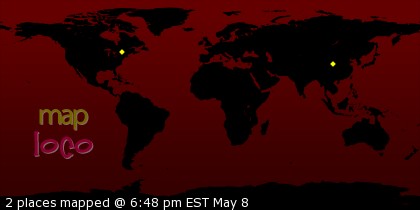Here. I found this paragraph: The more interesting question which cropped up out of today's passage of words was whether there must be a core of strong and genuine emotion at the bottom of every story. I'm leaning heavily toward "there certainly ought to be" on this. Perhaps this is self-evident, perhaps it is not, but I chew on it nonetheless. and particularly this part of it: Our Western/anglophone storytelling tradition begins with a character in a setting with a problem. to be the most interesting part of the post.
That's because this description of story gives equal weight to character, setting (world), and problem (plot) while Jay focuses on the element of character and honest emotion. This is not to suggest that he's ignoring the other elements either in his post or his work, just to point up the emphasis on character where, from the exact same sentence in another context I might well focus on the aspect of setting or plot first. I think the lesson here is that for a story to function well it needs all three legs.
It's something I try to do in my own writing. As I said somewhere else in this huge multi-blog multi-post debate, I start with world, then develop plot, and finally add character. This doesn't mean that I ignore character or discount it. That would be profoundly foolish, and I work very hard to have believable characters. Its just that character is not at the forefront of my process and it is the thing that is easiest for me to adjust to fit the rest of the story. In some ways I think of myself as a playwright hiring actors to perform a show. It is the role that is of central import to me and its needs, not the underlying motivations of the actors.
This is not to say that I have anything against a writing style that is character driven. Among the many writers whose work I enjoy, character driven writers are quite prominent, Lyda for example—even if I do seem to be driving her to distraction at the moment. But at the same time, good characters are not enough in and of themselves to hold my attention. I need plot—if the problem isn't compelling, I will wander away. And I need setting—vivid characters with interesting problems wandering around in a nebulous gray landscape, or worse, a self-contradictory one, drive me crazy.
When I teach writing, I try to emphasize that a writer should start wherever they find motivation and follow whatever path they find compelling. There is no right way to do this. In the end, the process isn't what matters to anyone but the individual writer. It is the end result and how it interacts with the reader that ultimately decides the success or failure of a work as Jay points out that Barth so wisely notes here.
Wednesday, December 27, 2006
Subscribe to:
Post Comments (Atom)





3 comments:
Well, I guess I put character at the forefront because that's the reader identification. It's also the weakest link in my chain. I was more or less born with a reasonable grasp of setting, and problems (ie, plots) have never been especially difficult for me to twig to, though I've had to learn a lot along the way. Characters, though...man, those are tough little cusses. But without good characterization you have either a travelog or an instruction manual.
Sure, I'm right there with you on the difficulty of character. It's the single thing I've had to work hardest to nail down. I also know from long experience that the closer I write to my own internal emotional process the less believable it seems to my readers. At the same time, without plot of some sort you generally have mary-sue or angst-boy mush. And without setting you have...honestly I don't know what you have, though I've seen it and it drives me crazy.
Our... storytelling tradition begins with a character in a setting with a problem.
I think this is a good decanting of the question, though admittedly, out of context it says very little. But as a basic rubrick off which to build a story, here are the basic elements, and unless you are talking abotu and exercise or an art piece, a story needs all three. It also interested me that this particular phrasing combined those elements in an unbroken chain; they are interlinked, and I think that is an important point. The real world is full of collisions and tie-downs, bumping into one another and pulling each other in a variety of ways. Nothing exists in a vacuum, and those interactions provide a reasonable mode of change.
Another point I should like to interject is that Lyda and Kelly appear to be arguing more about the author's focus, and not the outcome of the work. I could read a story by Kelly (and have) and find that the characters are very realistic and compelling--though that is not his focus. Similarly, I could read a story by Lyda (and have as well) and find that her world is astonishingly well-built--though that is not her primary focus, either.
This is not a case of black and white. Nor is it even simply shades of gray. This is the full spectrum, with blue for setting, red for character, and yellow for plot. (Or red, blue, and green for you scientifically nitpickian types)
Post a Comment